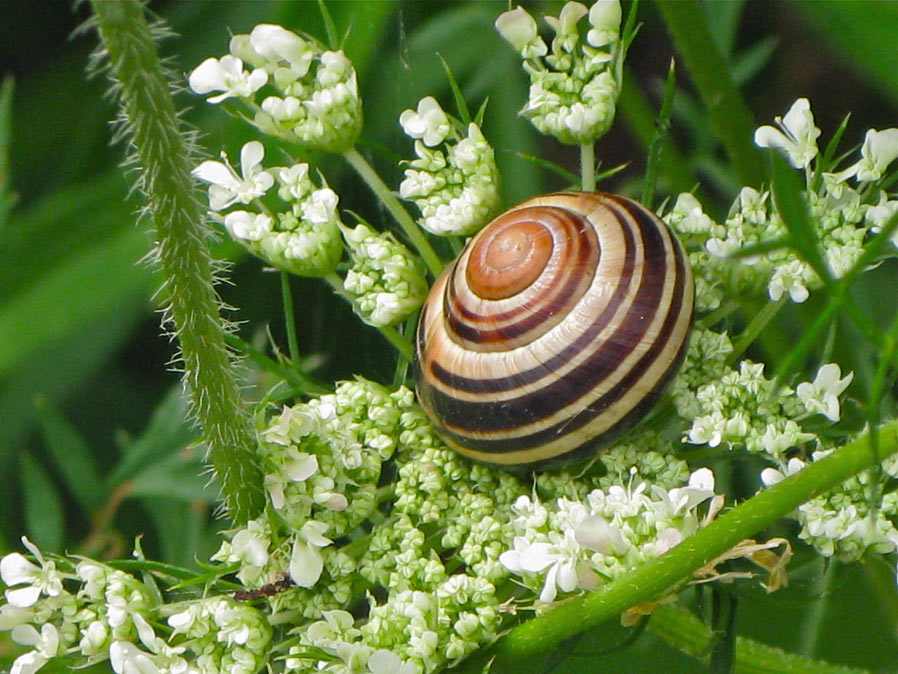A banded wood snail (Cepaea nemorialis) finds a comfy home on the flat flower head of Queen Anne’s lace (Daucus carota) in Tommy Thompson Park on Monday. © BCP 2010
I recently discovered a charming website called naturewriting.com that asks the simple yet profound question “What is nature writing?” Then the site’s author, a gentleman by the name of Ron Harton, who seems to live in or near the desert of central California, proceeds to answer his own query. Here is a bit of what he says:
“Nature writing is not just any writing that happens to mention an animal or ‘the outdoors.’
Nature writing is born out of love, respect, and awe. It finds its subject during days of close observation of the natural world. It finds its voice in the relationship with nature developed during those days.”
I was particularly struck by Harton’s use of the words love, respect and awe. It was exactly those qualities I recognized in the writing of a woman named Janet Lembke, the author of a book entitled Because the Cat Purrs — How we relate to other species and why it matters. I came across excerpts of her book online while doing a Google search on land snails. One hit turned up a chapter of her book called “The Mollusks in the Garden — a story of earthbound trails and bungee-cord sex.” I know! You’re hooked already, right?
Lembke’s writing, while filled with the nitty gritty facts of biology, is as pure as a love poem. It is most certainly founded on love, respect — and yes, even awe — for the creatures she finds in her own backyard. Here’s part of how she begins her chapter on snails and their gastropod cousins, slugs.
“They cannot know me (even though they do have a primitive brain), but that does not stop me from wanting to know them, and not just their names but their food preferences, their anatomy, their mating habits and their very evolution. How did they arrive in my garden?”
Lembke then proceeds to answer these questions most beautifully. After reading her chapter, I knew so much more about snails and slugs than I did after reading, memorizing and regurgitating the contents of a textbook called Invertebrate Zoology, a tome bigger than most doorstops. It was for a course I had to take (in another lifetime) at the University of Guelph that was known to one and all as InvertZoo. Glad I took it, just the same.
Lucky you. If you want to know more about the fascinating world of snails, you can do so without InvertZoo and without Wiki. Just read Lembke on the topic. (Better yet, order her book.)
You’ll learn about snail chirality, for starters. That’s a description of whether the snail’s shell is right-handed or left-handed. For the record, banded wood snails are right-handed. You can see one in the picture above. I found this beautiful guy on a walk through Tommy Thompson Park (aka the Leslie Street Spit) on the Civic Holiday. They were everywhere!
This is the perfect weather to see these fascinating creatures with the colourful invertebrate sex life. Just check your yard.
© BCP 2010




no comments